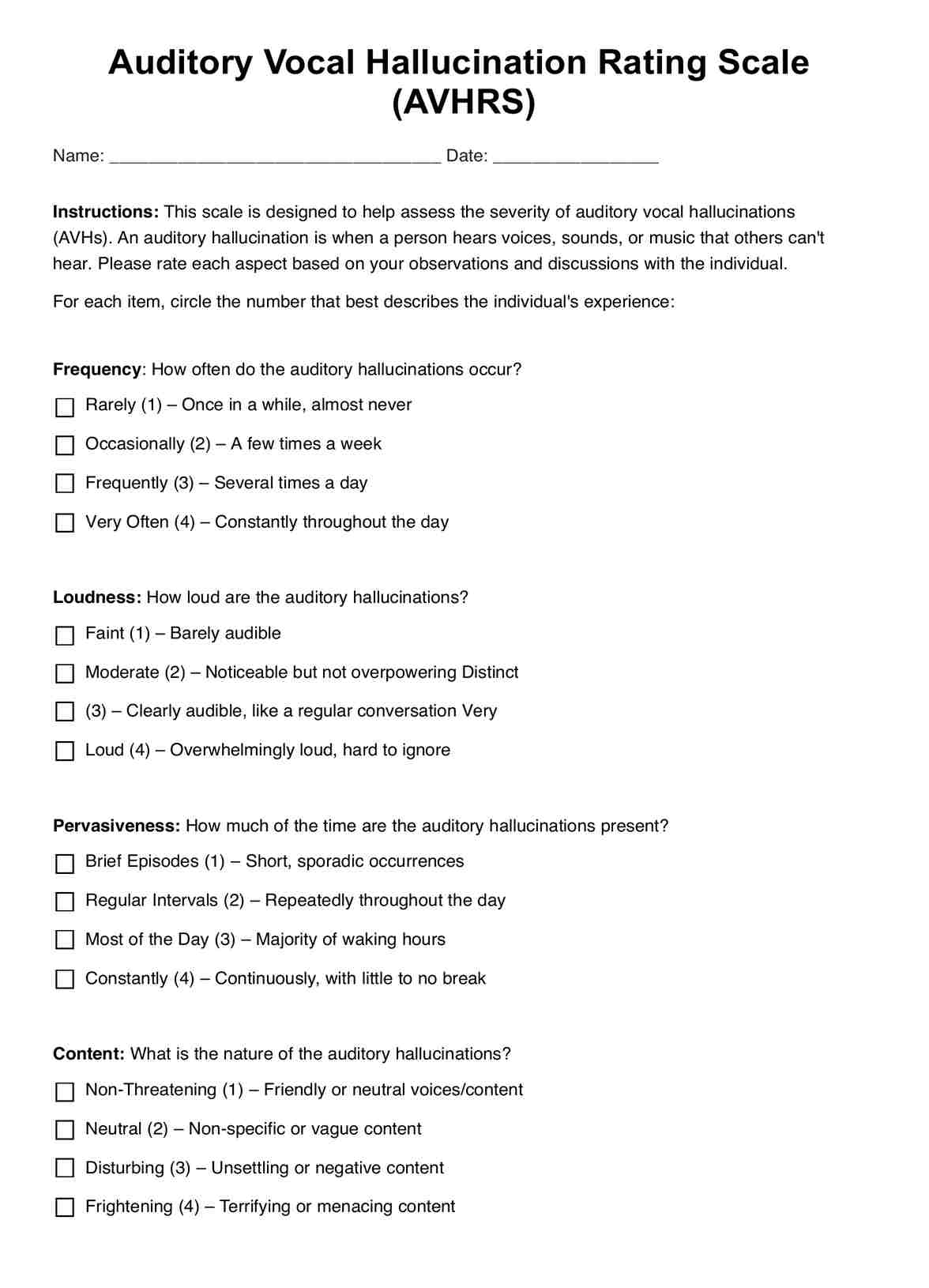Normally, the Auditory Vocal Hallucination Rating Scale (AVHRS) requires approximately 10 to 15 minutes for completion. During this assessment, individuals describe their auditory vocal hallucinations (AVHs) in detail and rate them across dimensions like frequency, intensity, content, control, distress, and impact.

Auditory Vocal Hallucination Rating Scale
Evaluate auditory vocal hallucinations using the Auditory Vocal Hallucination Rating Scale. Enhance treatment and gain insights for effective interventions.
Auditory Vocal Hallucination Rating Scale Template
Commonly asked questions
Sum up the scores assigned to each item to calculate an overall severity score. A higher score on this scale indicates a more pronounced severity of auditory vocal hallucinations, underscoring their substantial influence on an individual's emotional and mental state.
The AVHRS finds utility across clinical, research, and educational settings. While commonly employed to gauge AVH severity in schizophrenia and psychotic disorders, it also assesses AVHs in other conditions like depression or anxiety.
EHR and practice management software
Get started for free
*No credit card required
Free
$0/usd
Unlimited clients
Telehealth
1GB of storage
Client portal text
Automated billing and online payments











